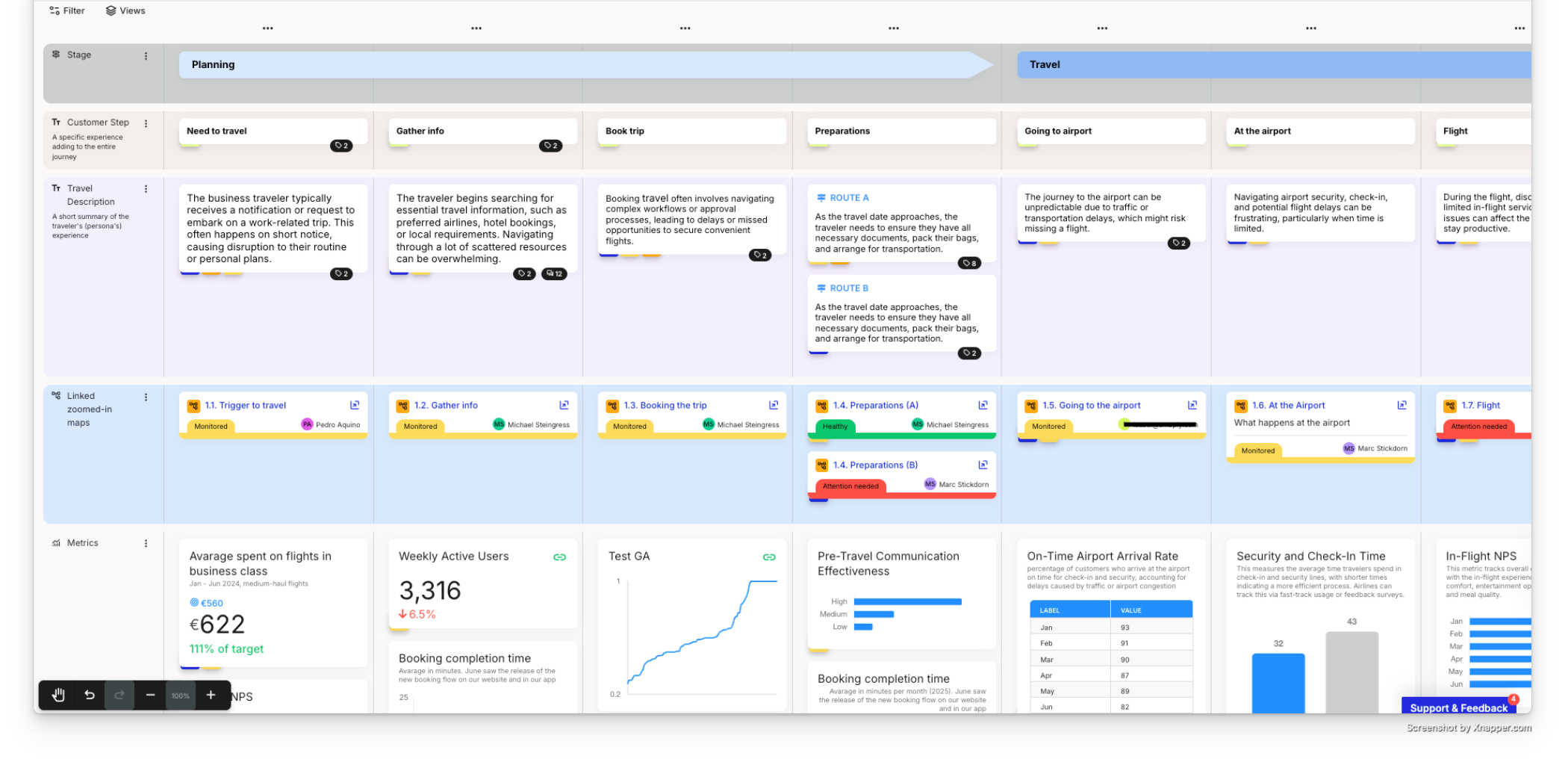Instead of optimizing channels in isolation, organizations are learning to manage journeys as living systems that evolve with customer expectations. This model demonstrates that journeys provide the most meaningful structure to link human experience with measurable outcomes. It helps leaders see not just what happens, but why it happens and what it costs or earns. This is why it's time to reframe ROI through a journey-oriented lens.
The Modern ROI Equation
Traditional ROI calculations often stop at top-line metrics such as revenue uplift. Journey management broadens that view by revealing where value is created or lost along the customer lifecycle. The most advanced teams assess ROI across three interconnected dimensions:
1. Customer Outcomes
Customers reward clarity, simplicity, and empathy. A consistent, seamless experience improves satisfaction, reduces effort, and deepens loyalty. These improvements translate into higher advocacy, stronger retention, and ultimately a compounding effect on brand equity. The financial logic is clear: loyal customers are cheaper to retain and far more profitable to serve.
2. Operational Efficiency
Journey management exposes inefficiencies that often hide beneath functional KPIs. When teams align around journeys, they can reduce rework, eliminate redundant handovers, and increase first-contact resolution rates. This leads directly to lower cost-to-serve, a crucial but often overlooked dimension of ROI.
3. Business Growth
When experiences are frictionless, conversion rates increase and churn declines. Journey insights help pinpoint where cross-sell or upsell opportunities are most relevant. The outcome is not only more revenue, but more predictable revenue. This operational predictability strengthens long-term growth planning and investment decisions.
Cost-to-Serve Modelling: Giving Pain Points a Price Tag
One of the most powerful ways to prove ROI is through cost-to-serve modelling. This approach quantifies the financial impact of pain points within journeys, turning vague frustrations into tangible costs. For example, each repeat contact, delayed resolution, or abandoned onboarding step can be assigned a measurable cost in terms of labor hours, lost opportunity, or customer churn.
By assigning price tags to friction points, organizations can:
- Prioritize the issues with the highest potential savings.
- Translate experience improvements into CFO language.
- Create a running “experience profit & loss” that tracks how journey initiatives affect margins.
For instance, if a support journey generates 10,000 unnecessary follow-up calls per month at €5 per interaction, that’s a €600,000 annual opportunity. And that’s only the direct service cost.
When factoring in opportunity costs such as employee time that could have been used for higher-value interactions, the true cost of poor experience becomes substantially higher. These indirect losses often dwarf the visible savings, reinforcing why a holistic ROI lens is so critical.
Journey management helps teams identify, fix, and verify improvements, linking customer delight to operational savings in a single narrative.
How journey-oriented measurement works
The shift from reporting metrics to managing outcomes is at the heart of modern ROI practices. The concept of a journey atlas illustrates how measurement becomes operationalized:
- Define journeys and outcomes
Focus on the few journeys that truly matter, such as onboarding, checkout, support, or renewal. Each should have clear boundaries, an accountable owner, and agreed-upon success criteria. - Connect the data
Combine behavioral, operational, and sentiment data in one view. Use analytics platforms, CRM data, and feedback loops to understand how experience flows affect performance. Show these metrics on your journey maps. - Establish leading and lagging indicators
- Leading indicators: journey completion rates, adoption metrics, abandonment trends.
- Lagging indicators: retention, repeat purchase, cost-per-contact, and profitability.
This dual lens allows teams to act on signals early while proving long-term financial impact.
- Tie metrics to financial Impact
Every journey improvement should connect to quantifiable results, like reduced handling time, lower attrition, increased conversion, or faster revenue realization. - Build continuous feedback loops
Set up governance that reviews journey health quarterly. Use dashboards, learning sessions, and experimentation frameworks to ensure accountability and improvement momentum.
From insight to action: Making ROI tangible
A practical 4-step roadmap:
- Pick a journey with high business visibility – For instance, new customer onboarding or claims processing. Align all stakeholders around one goal.
- Baseline performance and instrument the journey – Measure existing metrics and model cost drivers. Establish both experiential and financial baselines.
- Implement targeted changes – Fix friction points that affect both customer effort and operational cost. Document pre/post results.
- Communicate outcomes clearly – Translate changes into financial language: fewer calls, shorter cycle times, higher conversion, lower churn. Report the savings and gains in one integrated ROI statement.
This approach ensures that CX leaders can speak the language of finance while staying true to customer experience objectives.
Governance and culture: Sustaining ROI
ROI is not a one-time proof point, it compounds when embedded in daily operations. Mature organizations treat journey management as a shared discipline with a clear governance structure:
- Unified journey taxonomy that gives everyone a common language for talking about experiences.
- Cross-functional ownership to ensure accountability across silos.
- Transparent measurement dashboards that link customer behavior with cost and revenue impact.
- Iterative optimization loops that turn every insight into a new hypothesis for improvement.
A culture of journey-led thinking encourages teams to ask not just “What’s broken?” but “What’s the value of fixing it?”
Over time, this shifts decision-making from reactive problem-solving to proactive investment in experience quality.
Conclusion
Journey management delivers measurable ROI by making customer experience quantifiable and financially accountable. Through cost-to-serve modelling, integrated data, and continuous measurement, organizations can uncover the real economics of experience – where loyalty is built and growth can be unlocked.
Key takeaway: The ROI of journey management lies in the intersection of empathy and evidence. When every journey becomes a managed asset with its own cost and value profile, companies don’t just create better experiences; they create more efficient, resilient, and profitable systems that scale trust and loyalty along with revenue.



